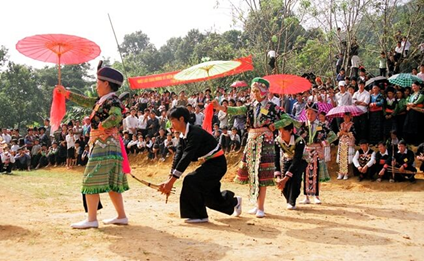Travel information
1. Hanoi city:
Hanoi is the capital of Vietnam. It covers an area of 3328.9 km2. With an estimated population of 8.1 million as of 2019, it is the second largest city in Vietnam. The metropolitan area, encompassing nine additional neighbouring provinces, has an estimated population of 16 million. Located in the central area of the Red River Delta, Hanoi is the commercial, cultural, and educational centre of Northern Vietnam. Having an estimated nominal GDP of US$32.8 billion, it is the second most productive economic centre of Vietnam, following Ho Chi Minh City. You will never be stuck for something to do in Hanoi, where ancient and proudly preserved Vietnamese culture is felt most keenly by visitors, and progress wrestles with tradition in different districts of the city.
Hanoi is actually over 1000 years old so the wealth of history here is mind boggling: temples, ancient citadels, unique theatre and stunning wilderness just outside the city all offer fun-filled days in Vietnam’s capital. Make sure to visit as many of these attractions in Hanoi as possible because they all offer entertainment, beauty and education at different turns. Enjoy our list of Top 10 Things to Do in Hanoi below.
Several places to visit:
Imperial Citadel of Thang Long
The Imperial Citadel of Thang Long is an intriguing relic of Vietnam’s history and, signifying its historical and cultural importance, is now a UNESCO World Heritage Site. Standing 40 metres high, the central flag tower is the most recognizable feature of the Imperial Citadel and is often used as a symbol of Hanoi.
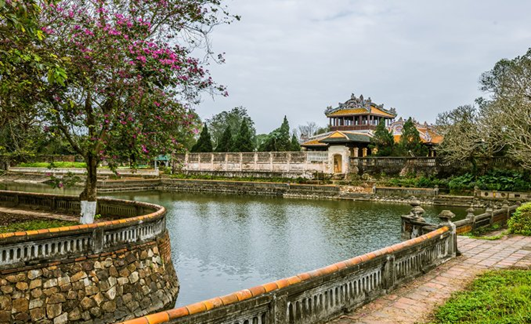
This was the centre of ancient Hanoi and served as the political centre for eight centuries. Located in Ba Dinh, the Imperial Citadel of Thang Long is close to many other tourist attractions.
- Opening Hours: Daily 8:00 – 12:30 & 13:30 – 19:30
- Location: Quan Thanh, Ba Dinh, Hanoi
Water Puppet Theatre
The ancient art form of water puppetry has a long association with Hanoi and there are several theatres where guests can enjoy this uniquely Vietnamese take on Asia’s puppet tradition. The original – and widely regarded as the best – theatre in town is the Thang Long Puppet Theatre. Puppets dance and slide elegantly over the liquid stage, controlled by a whole troupe of puppet masters hiding behind a screen. Most shows also feature the famous Legend of the Restored Sword of King Le which tells the tale of Hoan Kiem Lake and the giant tortoise.
- Opening Hours: Daily 15:00, 16:10, 17:20, 18:30 & 20:00
- Address: 57B, Dinh Tien Hoang Street, Hoan Kiem District, Hanoi
- Tel: +84 43 824 9494
- Price Range: VND 100,000
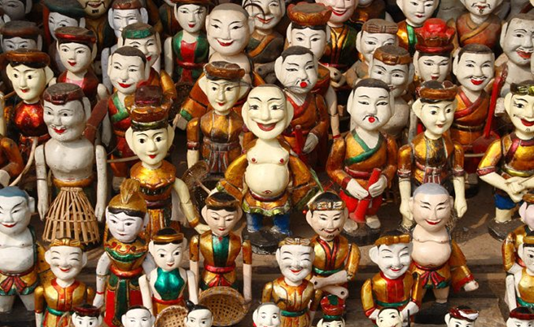
Ho Chi Minh Mausoleum
Ho Chi Minh has left an indelible mark on Vietnamese history and he is revered in Hanoi as the country’s greatest leader. Nicknamed ‘Uncle Ho’ by locals, his preserved body is now laid to rest in a glass case in the Ba Dinh area of Hanoi. This is more than a tourist attraction, it is a part of living history and a visit here stays long in the memory. The sombre building was modeled after Lenin’s mausoleum in Moscow.
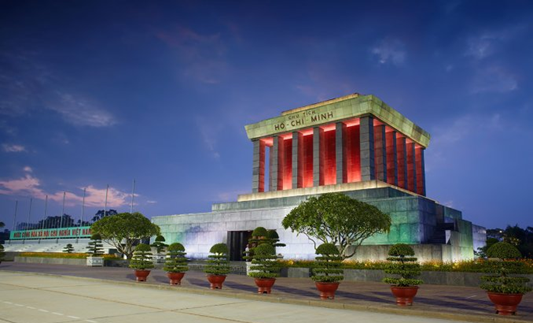
- Opening Hours: Tuesday – Thursday 07:30 – 10:30, Saturday & Sunday 07:30 – 11:00
- Address: 8 Hung Vuong, Dien Bien, Ba Dinh, Hanoi
The Perfume Pagoda
The Perfume Pagoda is a dramatic temple complex believed to have been first built in the 15th century. This series of Buddhist temples are built into a mountain range in a maze of alleyways carved into the rock with rich forests and flowing streams all around. Located around 60km south of Hanoi in the Son Mountains the journey here is an experience in itself: first you must take a two hour journey by car or bus before travelling by boat to the foot of the mountains. Read More…

- Opening Hours: Daily 06:30 – 17:00
- Location: Huong Son, My Duc, Hanoi
Hoan Kiem Lake and Ngoc Son
Hoan Kiem Lake (Turtle Lake) is a central feature of Hanoi and is a popular hangout spot throughout the day with locals and tourists. Ngoc Son Temple sits on a small island in the centre of the lake and linked by a bridge, makes a beautiful background for a few photos. Around sunrise and sunset, this area becomes especially busy with joggers, couples enjoying the relaxing views across the lake, and the elderly practising Tai Chi and line dancing. Hoan Kiem Lake is free of charge, but there’s a fee of VND 20,000 to visit Ngoc Son Temple, which sits on a small island in the centre of the lake.

- Location: Hanoi Old Quarter
Dong Xuan Market
Dong Xuan Market is the largest of its kind in Hanoi. Housed within a four-storey Soviet-style building, this sprawling complex offers an extensive collection of fashion, apparel and souvenirs at some of the best prices in the city. Even if you’re not interested in printed T-shirts or cheap sunglasses, it is still fascinating to see the comings and goings of the local traders, and there is a wet market on the ground floor where the sights and smells of exotic produce assault the senses. Read More…
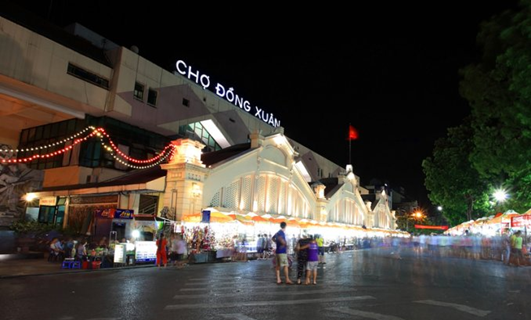
- Opening Hours: Daily 06:00 – 19:00
- Address: Dong Xuan Street, Hoan Kiem District, Hanoi
Hanoi Old Quarter
Hanoi Old Quarter is a fascinating area of the city where visitors can enjoy many fine examples of colonial architecture packed along narrow streets. Endless packs of scooters, motorbikes, bicycles and cars weave around traders selling fruit and souvenirs and narrow shop houses sell delicious Vietnamese food for pennies. The Old Quarter brings to life what many people imagine Hanoi to be, and exploring this area on foot is highly recommended for all visitors to Vietnam’s capital city.
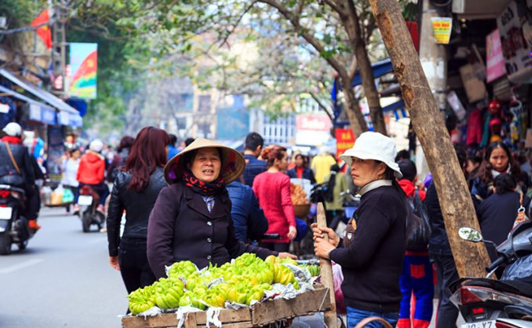
- Location: Hanoi Old Quarter, Hoan Kiem District
Ba Vi National Park
Ba Vi National Park is a nature reserve of stunning beauty located around two hours (48km) from downtown Hanoi. Famous for its three-peaked mountain that juts steeply up into the sky and is often topped by cloud, Ba Vi National Park has dramatic scenery and a diverse range of jungle plants and animals. At the summit of the tallest mountain is an 11th century temple offering expansive views of the surrounding countryside and on the forest floor are natural hot springs.
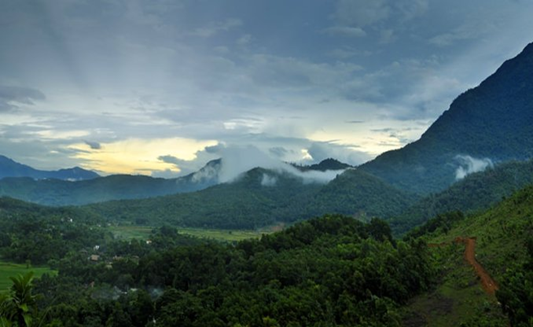
- Location: 58 kilometres west of Hanoi
Hanoi Opera House
Hanoi Opera House, set in the heart of the French Quarter, is arguably one of the most elegant buildings in all of Hanoi. Built in 1911 and modelled after the Paris Opera House, this historical landmark exudes Parisian charm from its ivory-toned columns, ornate balustrades and Gothic domes. Priced at VND 100,000 upwards, visitors can enjoy classical performances ranging from Vietnamese opera and dance performances to sketches and music concerts by world-renowned artists.
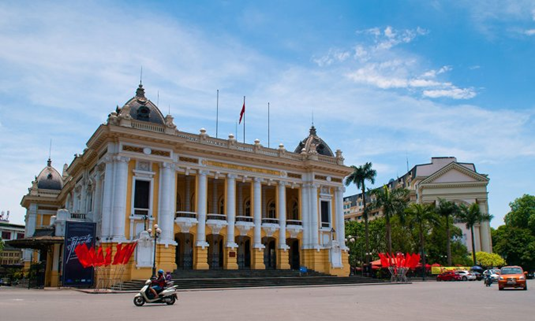
- Address: 1 Trang Tien, Hoan Kiem District, Hanoi
- Tel: +84 43 933 0113
- Price Range: VND 100,000 – VND 2,000,000
Temple of Literature
The Temple of Literature is a charming temple complex in the centre of Hanoi that was originally built to be a centre of learning dedicated to the Chinese sage and scholar Confucius. Over the proceeding 1000 years many more buildings have been added and beautified o that now this large area is filled with ornate pavilions, shrines, and a rich garden. It has become a rite of passage for graduating doctors to visit The Temple of Literature and the whole place is steeped in Vietnamese history.

- Opening Hours: Tuesday – Sunday 8:30 – 11:30 & 13:30 – 16:30
- Address: 58 Quoc Tu Giam, Van Mieu, Dong Da, Hanoi
- Price Range: VND 10,000
2. Ha Long Bay in Quang Ninh Provice
Its name translates as the “Bay of Descending Dragons” and it’s not hard to understand why Ha Long Bay has such mythic appeal. The most visited tourist attraction in Vietnam blends spellbindingly beautiful coastline with an emerald sea that ripples with limestone monoliths by the thousand. Throw in spooky stalactite-spiked caves, picturesque islands and miraculously built floating fishing villages and you have a veritable bucket list destination.
The Best Things to See and Do in Ha Long Bay, Vietnam
See Ha Long city
Architectural Landmark
Panorama of Ha Long City, Vietnam, with Bai Chay bridge and Sun Wheels Near Halong Bay, UNESCO World Heritage Site. Most visitors to Ha Long Bay whizz in from Hanoi without a glance at nearby Ha Long city. Yet it’s an attractive base for bay trips – built around dramatic jungle-covered limestone hills and fronted by a white sand beach. There are astonishing bay views from the Queen cable car – which runs over the ocean to the jagged Ba Deo peak. And while Hanoi is a three-hour drive from Ha Long Bay, Ha Long city is a mere 25 minutes away.
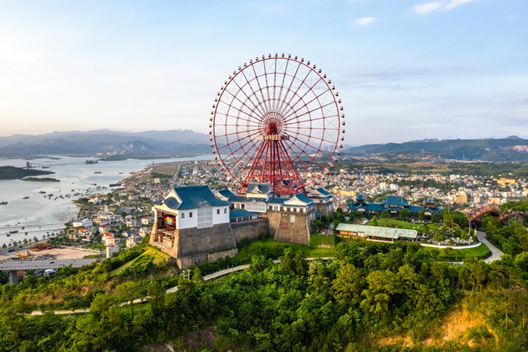
Visit the beach
Natural Feature
Ignore the detractors who claim that there are no beaches in Ha Long Bay. There are – and they just so happen to be some of the most beautiful in North Vietnam. Long crescents of sand fringe Quan Lan and Tuan Chau islands, near Ha Long city. Tuan Chau’s main sprawl is a dream – a 3km (2mi) stretch nuzzled by turquoise ocean shallows. Roll up and you’ve got the perfect spot to spread a shawl, sip a few Mai Tais and contemplate that gorgeous view of myriad pinnacle islands.
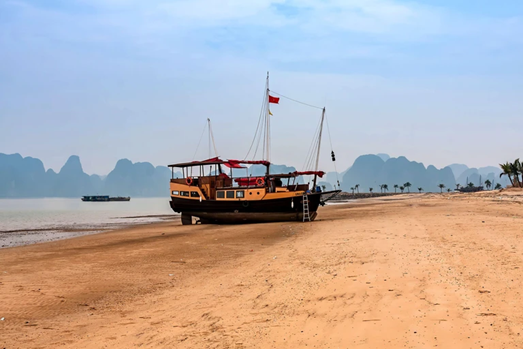
Discover grottoes
Natural Feature
Ha Long’s pinnacle islands are cut with caves. Most cruise visits include a gentle row through the arches of Luon cave and a clamber into the garishly lit, stalactite-filled Sung Sot cave, one of the largest in the bay. Trinh Nu, on Bo Hon Island, and Thien Kung (aka Paradise Cave) receive fewer visitors. The former drips with flowstones that look like statues of women with hair falling over their eyes, the latter is dramatically pierced by a single shaft of light. If you thought caving was for anoraks, open your eyes.
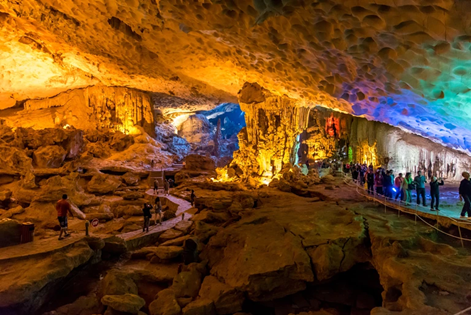
Tour the floating villages
Fishermen have been living in Ha Long Bay for millennia, mostly on self-constructed floating islands that dot the emerald sea between Ha Long’s jungle-swathed peaks. The prettiest is Cua Van floating village; keep your eyes peeled for its brightly-painted huts and fishing boats veiled with drying nets. Tours and self-guided kayak trips around the village and fish farm are easy to organise with tour operators in Ha Long or Hanoi.

Kayak and scuba-dive
Kayaking around Ha Long’s smaller peaks, through arches and caves, over glassily clear water, is magical. Most of the bay is off-limits, but it’s possible to paddle around the floating villages, through Luon cave and around the craggy islands at Cong Do, which are dotted with hidden lagoons and edged with beaches and coral gardens. The deeper reefs in Cong Do’s southwest are among the bay’s best snorkelling and diving spots.
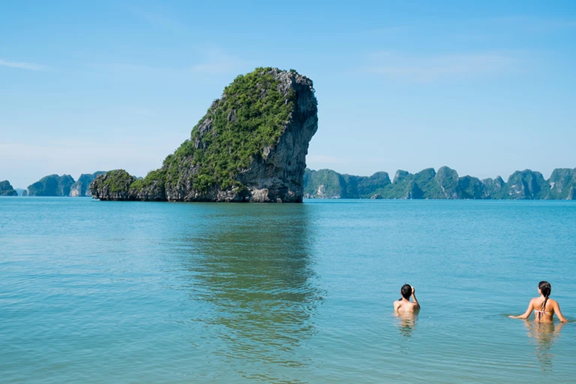
Glimpse Ha Long Bay from a seaplane
The best way to arrive from Hanoi? By seaplane of course. The Vietnamese will tell you that Ha Long was formed when dragons spat gems into the South China Sea to create a fortress against armies from the north. From the air, it’s easy to imagine they’re right as you gawp at the more than 2,000 jade-green, forested islets encircled by silvery beaches and beyond them, open emerald seas.
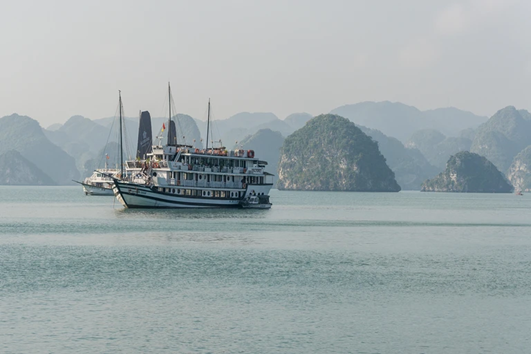
Go scuba diving in Lan Ha Bay
Where Ha Long Bay meets the open ocean it reveals clusters of larger islands, ringed with reefs that fall away abruptly into deeper sea. While much of the coral in Ha Long Bay has died, there are still a few living reefs in Lan Ha, especially around the islands of Cong Do and Vung Ha. The water is warmest between May and November and resorts in both destinations can organise dives.
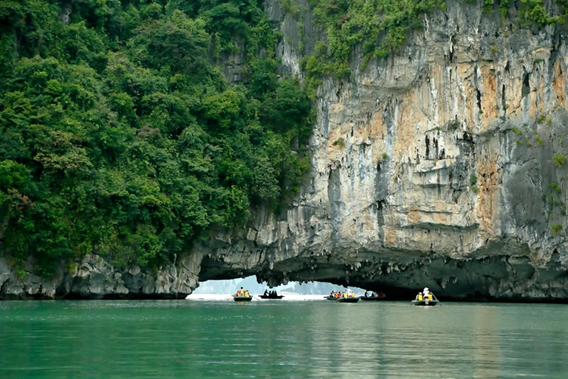
Visit Tuan Chau Island
Located just off the coast of Halong City, this tiny island of just 1,500 residents is one of the most developed tourist destinations in the area. Tuan Chau can be reached via a two-kilometer-long road that connects it to the mainland, which has made it a lot easier and convenient for visitors to stay here and get “the island experience” without having to worry about transportation.
A well-developed resort destination, the island has a golf course; beach villas; a number of restaurants; and a beautiful marina, where cruises often stop so travelers can catch a dance performance or grab some souvenirs.
A nature reserve on the island offers chances for trekking and camping, while the coastline is perfect for kayaking, water skiing, and parasailing.
3. Ninh Binh Province
Ninh Binh is a playground for adventurers, and an oasis for nature lovers. Vietnam’s first capital was established here, and today the area is a protected UNESCO World Heritage Site, full of mossy pagodas, striking limestone karsts, and surreal landscapes. Ready for an adventure? Here are ten must-do activities when in Ninh Binh.
Cruise on a paddleboat tour in Trang An or Tam Coc
Some of Ninh Binh’s best scenery can only be accessed by boat. A paddleboat tour in Trang An or Tam Coc is an essential Ninh Binh experience. Your own boatman or woman will paddle you along the gentle current, in the shadow of enormous, jungle-covered karsts. The boats stop at temples and glide underneath grottoes along the way.
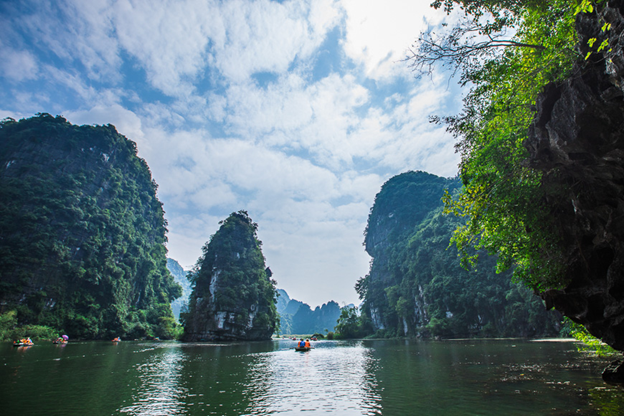
Go temple trekking at Bich Dong Pagoda
Located at the foot of a large mountain, Bich Dong Pagoda’s ornate gate is one of the most iconic sights in Ninh Binh. A stone bridge spans a large lotus pond, which explodes with bright pink blossoms in the summer. Just beyond the gate is a tranquil courtyard and a traditional Buddhist temple. Follow the stairs up and around the mountain for stunning views, then look for two other temples embedded in the mountain, dating back to the 18th century.
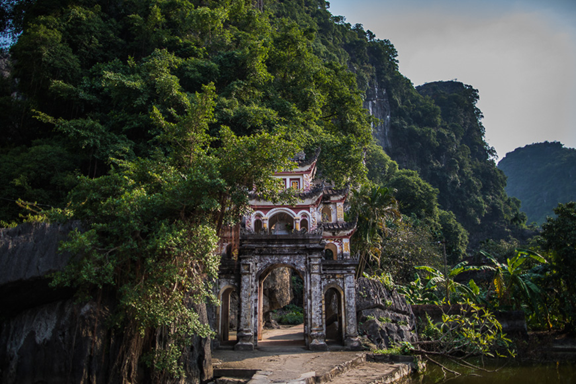
Taste the local specialities
While in Ninh Binh make sure to try the province’s signature dishes: com chay and de tai chanh. Com chay is a fried rice crust which is eaten as a delicious snack or dipped into a warm stew. De tai chanh is made from goat meat — Ninh Binh’s most popular protein — lightly cured in lemon juice and tossed with chilies, lime leaves, and sesame seeds. For a real local breakfast, order a plate of banh cuon; fresh rice paper rolls filled with diced pork and mushrooms and served with mint and a mild fish sauce.
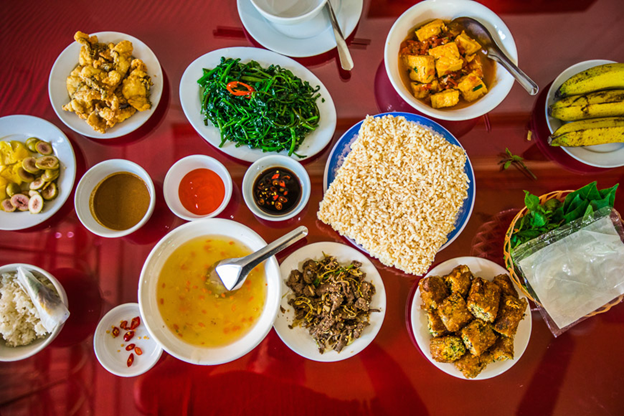
Stroll through Hoa Lu Ancient Village
If walls could talk you’d want to know what Hoa Lu’s brick- and vine-covered structures would say. Located just 20 minutes by car from the Trang An area, this is the site of Vietnam’s very first capital city. Hoa Lu reached its peak in the 10th and 11th centuries, when the surrounding karst landscape offered natural protection from invaders. Today you can stroll through two atmospheric structures that survive from the old citadel. The compound’s leaning archways, layered banyan trees, and rolling brick courtyards will transport you back in time.

Conquer the top of Hang Mua
Mua viewpoint is located at the top of a steep mountain, but the views are worth the 200,000 VND ticket, and the 500 steps up. From the top, you’ll be rewarded with a 360-degree view of Tam Coc valley. The viewpoint is sometimes covered in mist but wait for it to clear, and you’ll marvel at the patchwork quilt of green rice fields below and snaking rivers weaving in, out, and around the ancient karsts.
Wander the Bai Dinh Pagoda
Bai Dinh Pagoda is an enormous complex and the largest Buddhist temple in Southeast Asia. This singular attraction is a noted pilgrimage stop for Vietnamese Buddhists, and full to overflowing during Buddhist holidays. You’ll need lots of time to see the whole site. Expect to be awed by thousands of Buddha statues, elaborately carved bells and a 13-story watchtower, offering sweeping views of the countryside.
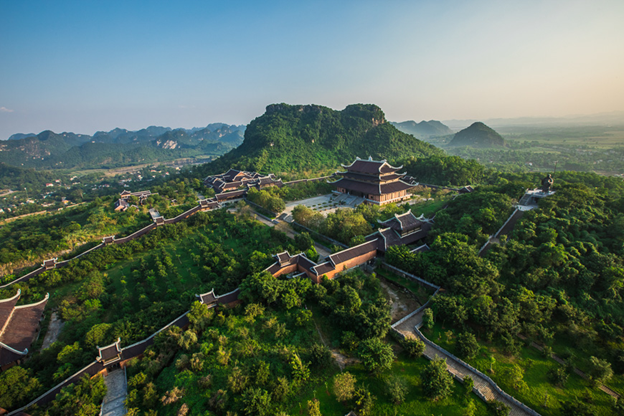
Go for a hike in Cuc Phuong National Park
Only an hour away from Ninh Binh City, Cuc Phuong is one of the oldest national parks in Vietnam. A ticket to enter the park is just 20,000 VND. Inside you’ll have several stops to choose from, including rehabilitation centres for reptiles and primates, and trails inside the national park to visit a clutch of ancient trees, some more than 1,000 years old. Set aside half a day for a rejuvenating hike through the forest, then reward yourself with a local lunch inside the park.
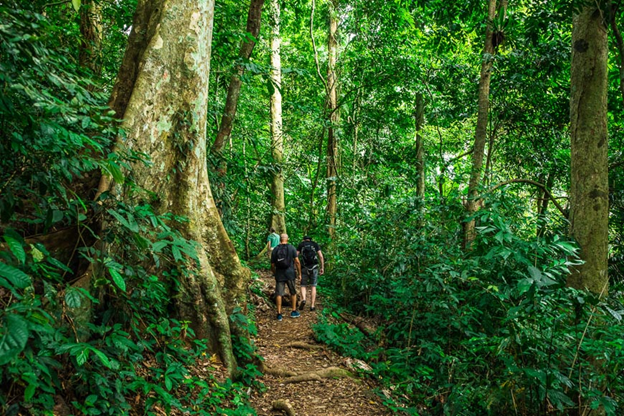
4. Sapa Town Lao Cai Province
Sapa is not only a place for relaxing but also a wonderful location for adventurous souls and nature lovers. Since there are a wealth of sites to visit. These are some best places to visit in this amazing land.
Bac Ha Weekend Market
You can find local markets everywhere in Sapa, but weekend markets are certainly unique things in the region. It is a perfect opportunity to contemplate the busy trading of the villagers and the special products in Sapa.

On Saturday, you can visit Can Cau Market, gathering places for mostly the Flower H’mong ethnic group. While tourists venture to this location, they will be able to encounter various outstanding sceneries of the mountainous areas. Arriving in Can Cau, a huge number of agricultural products are being sold. You can immerse in the life of the local and learn about their culture and customs.
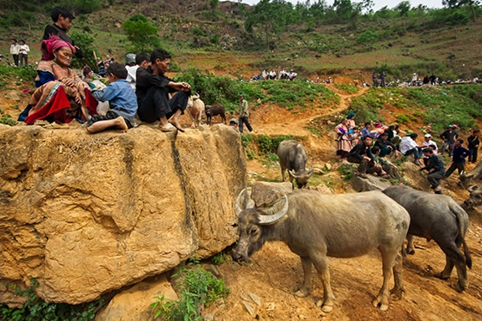
On the last day of the week, lots of tribes from different ethnic groups come to Bac Ha market to sell their products. As a result, it is possible to see their specialty such as vegetables, farm tools, wines and so on. You may also see exotic animals like birds, water buffalo, and especially the black pig. One best factor about the market is that customers can try the products first, before deciding to buy. Therefore, feel free to try some wine at Bac Ha weekend market.
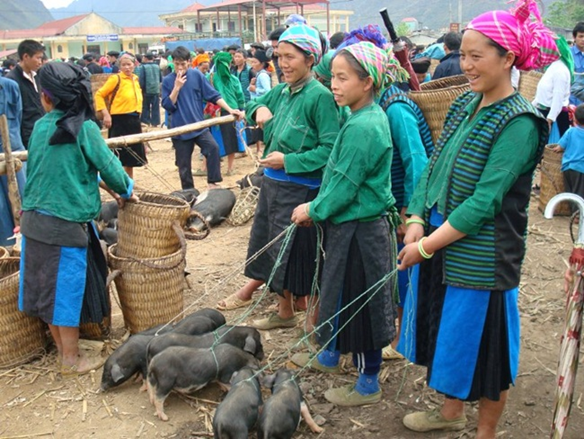
Muong Hoa Valley
If you want to find the best spot to take photos of the landscape in Sapa, we recommend you to book any of the Sapa Tours and spend time in Muong Hoa Valley.
The notable feature of the valley must be the vast terrace field of the villagers added with the charming nature. It will be a great joy to sit back and contemplate the scene after all the stress and worry from the modern life. Moreover, there are many strange ancient stones carved with unknown letters and graphics.
Otherwise, the villages around allow you to interact with local people. The hospitality and friendliness always touch the heart of visitors during their travel to Vietnam. Different forms of transportation are available which are bicycle and motorbike.
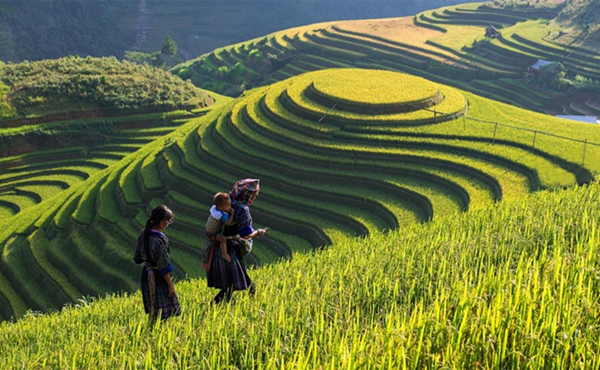
Local Villages
It goes without saying that your trip to Sapa cannot be satisfied if you do not visit the authentic local villages in the region. There are several ethnic groups and tribes settling in this area for thousand years.
All the villagers welcome tourist to discover their rich culture and customs as long as they respect these precious traditions. For ethnic villages, we advise you to travel to Ta Phin, Ta Van, Lao Chai, and Giang Ta Chai as these places are not very touristy. Local homestays are presented to receive guests who love to stay and learn more about the daily life of villagers.
In most villages, markets are opened every day with a wide variety of products including beautiful brocade and textiles. This is a great chance to buy a souvenir from the skillful craftsmen before returning to your country.
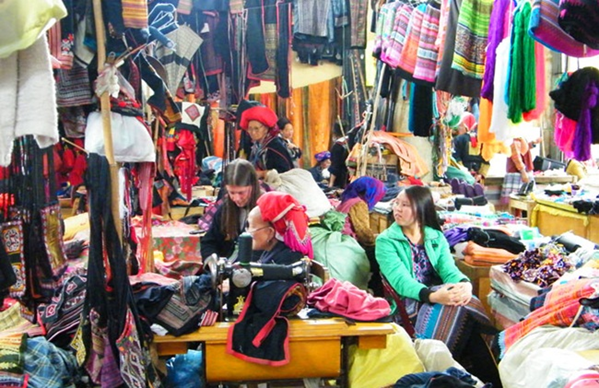
Thac Bac Waterfall
The outstanding nature of Sapa has been reflected in the mountain range, valleys and obviously in breathtaking waterfalls. However, the best one out of all is Thac Bac Waterfall (Silver waterfall).
The Silver Waterfall echoes with the sound of its stream from 100 meters from the top of the mountain. Combining with the vast forest, Thac Bac creates the mysterious and charming beauty of the area. After 30 minutes of trekking, tourists can sit down and relax while listening to the sounds of water, birds and watching the slight movement of trees.
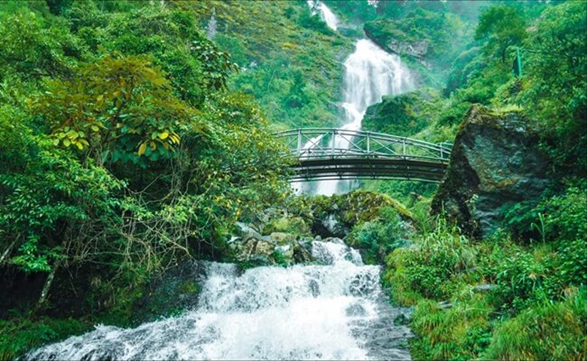
Fansipan Mountain
More challenging adventures are also available in Sapa and conquering the highest peak of Indochina is one of them. This will be an exciting trip for those who desire to test their strength and endurance. It is the Highest Peak in South East Asia.
Even though the climbing equipment is not necessary, you will have to trek for the whole day carrying basic essentials and rest in simple accommodation. On the way, tourists will encounter a great number of mountain scenes and wild animals if you are lucky. After a long and difficult trek, the breathtaking view on the top will be the best natural reward for any traveler. However, do not worry if you are not fit enough because there is Fansipan Legend, a cable car which transfers you to the top of the mountain.
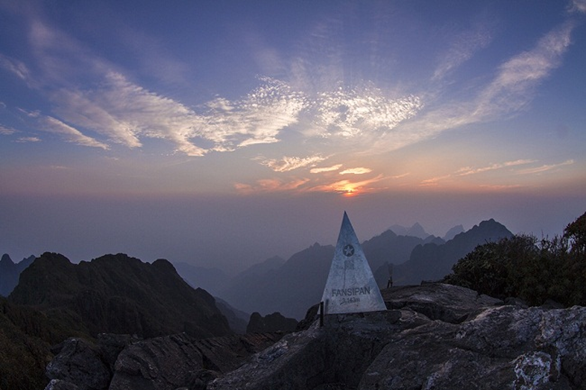
Notre Dame Cathedral Sapa
Located at the heart of Sapa mountainous town, Sapa Stone Cathedral is surely one of the must-see points of interest in Sapa. Indeed, you can easily encounter it when setting foot in Sapa thanks to its unique appearance. The church was built in the early twentieth century by some of the finest French architects. One of the most impressive things about the church is its material. Not like other churches in Vietnam, Notre Dame Cathedral Sapa is mostly built from stone, creating a solid look and beauty for the church.
Notre Dame Cathedral Sapa usually opens on weekends and every evening for local prayers and tourists. However, you will also have a lot of great photo opportunities when visiting it in the daytime, when it is surrounded by colorful-dressed ethnic children and fruiterers.
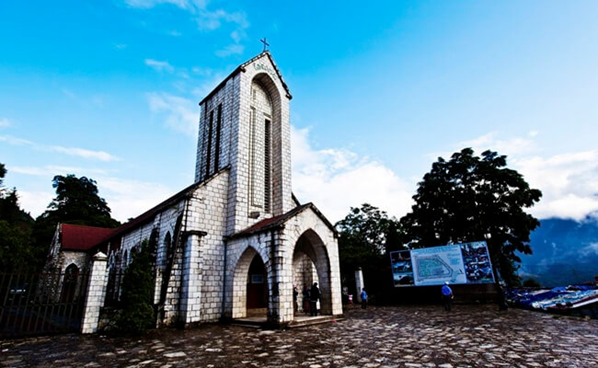
Fairy Cave
For those looking for a place to cool off near Sapa, then please look no further than the Fairy Cave or Hang Tiên. This is a lesser-known and non-touristy spot locating on the bank of Chay River, just outside of Bac Ha District – Sapa. Fairy Cave, which is surrounded by mountains and forests, boasts a broad system of limestone formations with stalactites and stalagmites of all shapes and sizes. It is called “The tiny version of Halong Bay” by the local people thanks to its harmonious combination of limestone cliffs and water.
To get to the Fairy Cave, the best way is to take a boat trip on Chay River to also contemplate the majestic landscape in Sapa.
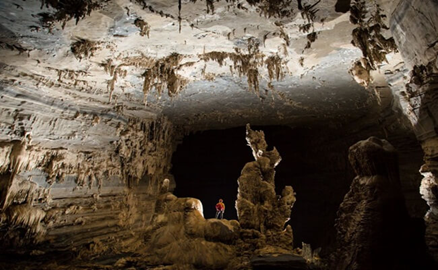
If you happen to visit Sapa on any Saturdays, wandering around the Love Market is definitely the experience you should not miss. The Market is not about selling and trading stuff, this is the place where ethnic youngsters in Sapa come, gather to find their other halves. It is a super cool place where you can see ethnic couples hanging out, dancing, eating, playing folk games together. To catch the girl’s attention, Hmong ethnic boys often blow a local instrument called “Khen” while dancing around their potential lovers. At the end of the day, these ethnic couples often promise to meet on the next sessions of Love Market to understand more about each other. Love market is surely one of the top places to visit in Sapa.
